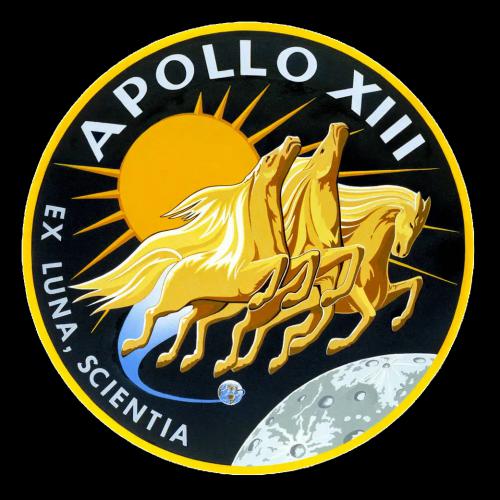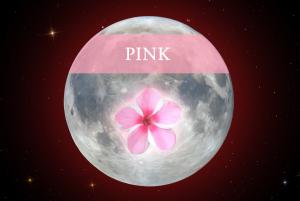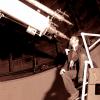Celebration of Space - April 11, 2025
Today, April 11, 2025, marks 55 years since the launch of the Apollo 13 mission. This mission is infamous due to the catastrophic failure of an oxygen tank onboard after 55 hours in space. The resulting rupture resulted in the mission performing an orbit around the Moon instead of landing on the lunar surface. The crew of Apollo 13 used the Aquarius lunar module as a lifeboat, which saved their lives. On April 17, 1970, the crew returned to Earth having missed their opportunity for a lunar landing. Take a moment today to check out the lunar impact photos from the Apollo 13 Saturn V rocket third stage ejection. Remember, the most amazing things we have done as a species always happened in the face of danger, not in the name of safety!
Tomorrow, Saturday, April 12, 2025, at 8:24 pm ET, the Moon will arrive on the opposite side of Earth than the Sun. This will place the entire side of the Moon facing Earth into direct sunlight. We call this the full Moon. Like all full lunar phases, the Moon will rise with the setting Sun and set with the rising Sun. This keeps the Moon above the horizon for the entire period of night. The April full Moon is commonly referred to as The Full Pink Moon of April, which gives testament to the creeping phlox that starts to bloom this time of year in the Northern Hemisphere. For those looking to make an eco-positive choice for their yard, removing the grass, which is a monoculture in most yards, will greatly benefit the habitat, and replacing the grass with creeping phlox will be fantastic for pollinators and it will add a lot of stunning color to your yard.
The April Moon in 2025 also carries another moniker – The Paschal Moon. This name is granted to the full Moon that determines the date of Easter. Every spring, the first full Moon after the Vernal Equinox is called The Paschal Moon, and the following Sunday will be the date of Easter. You may be asking – “Then why isn’t Easter this Sunday?!” The answer to that question comes down to the actual date of the Paschal Moon, which occurs on Sunday, April 13, 2025 at 12:24 am UTC (Greenwich Mean Time), which translates to 8:24 PM on Saturday, April 12, 2025 EDT (Eastern Daylight Time). Perhaps if the full Moon occurred 25 minutes earlier, then Easter would have occurred this weekend.
Regardless, step outside Saturday night, if you have a clear sky, and catch a view of the Full Pink Paschal Moon of April lighting up the night sky and the landscape, and perhaps take a stroll in your favorite wildflower meadow or under the magnolias and see some early spring blooms by the Moonlight.
On the night of March 27, 2025, a new comet was discovered by the SWAN instrument on the Solar and Heliospheric Observatory. The comet was quickly cataloged with a designation: C/2025 F2 SWAN. Since its discovery the comet has gone through an outburst which quickly increased its brightness significantly, but has since dimmed back down. The comet is currently visible in the morning sky on the edge of the constellation Pegasus. Though you will need a telescope or binoculars to see it. The comet will reach its closest point to the Sun, called perihelion, on May 1, 2025, at a distance of 30,993,579 miles from the Sun. The following day, May 2, 2025, it will swing by Earth at a distance of 89,488,342 miles. Early predictions expect that the comet may become naked eye visible on the evenings around perihelion. Considering that the New Moon will occur on April 27th, we will have a dim waxing crescent Moon to contend with, which will allow for much darker sky conditions for observing. Additionally, the placement of the crescent Moon is excellent for that stunning photo of the comet and the Moon together in the night sky.
Over the next few weeks we will keep an eye on Comet SWAN and if it appears to be following predictions we will post finder charts and perhaps host a special viewing event. Let’s hope for best case scenario, as having two naked eye visible comets for the first half of 2025 would be fantastic!
While you are out and about, here are some notable times to catch a fantastic view of China’s space station – Tiangong – passing over our region during the evening hours:
Fri, Apr 11 at 8:57 pm, starting in the W, rising to 80º, and into orbital sunset ← Fabulous pass!
Sat, Apr 12 at 7:57 pm, starting in the WSW, rising to 66º, heading towards the E ← Fabulous pass!
Sun, Apr 13 at 8:34 pm, starting in the W, passing overhead, and into the E, eventually experiencing orbital sunset ← Fabulous pass!
Mon, Apr 14 at 9:11 pm, starting in the W, rising to 67º, and into orbital sunset ← Fabulous pass!
Tue, Apr 15 at 8:11 pm, starting in the W, passing overhead, and into the E, dropping into orbital sunset just before setting. ← Fabulous pass!
Wed, Apr 16 at 8:47 pm, starting in the W, rising to 51º, heading towards the SE, and into orbital sunset
Let us know if you see it, and if you happen to catch a picture, we would love to see that as well.
- Author:
- Scott MacNeill
- Entry Date:
- Apr 11, 2025
- Published Under:
- Scott MacNeill's Columns



_2500-Brian_Nieves_1729264392.jpg)
